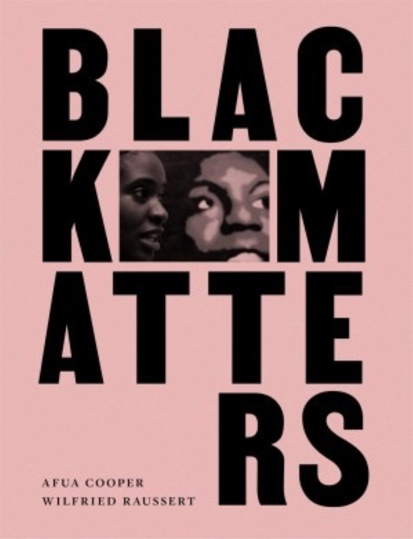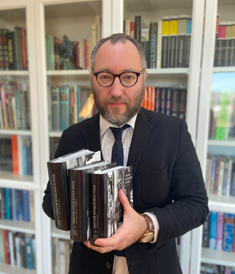This year, despite not being able to gather for an in-person reception, faculty and staff members from the Faculty of Arts and Social Sciences (FASS) have much to celebrate as they toast their colleagues from afar in recognition of the annual FASS Publication and Creative Activities Launch.
This year’s launch, which represents the output of about 45 per cent of the faculty, demonstrates an impressive array of cutting-edge research and creative work.
“It’s amazing to see the huge breadth and depth of research that is going on within FASS,” says Roberta Barker, acting dean of the Faculty of Arts and Social Sciences.
Researchers and creators in FASS are used to addressing vital social issues in their work, but their perspectives have proven more valuable than ever over the past year as the pandemic and structural racism emerged as key focal points.  FASS research and creative output spoke to the Black Lives Matter movement, Indigenous cultural resurgence, the social and political dimensions of the COVID-19 pandemic, and other key current socio-cultural topics.¬Ý
FASS research and creative output spoke to the Black Lives Matter movement, Indigenous cultural resurgence, the social and political dimensions of the COVID-19 pandemic, and other key current socio-cultural topics.¬Ý
Shown left, Afua Cooper and Wilfried Raussert's Black Matters, winner of the Portia White Prize.
Jennifer Bain, associate dean, research for FASS and a faculty member in the Fountain School of Performing Arts and Gender and Women’s Studies program, authored three articles featured in this year’s launch. She adds that in some of this year’s featured publications, we can see immediate, practical, identifiable applications to address today's complex social issues, while other publications engage in longer-term, deep engagement with the human condition.
“Our research in the humanities and the performing arts helps us to reflect on different cultural values through art and literature, or to think about how history is told and for what purpose, or to grapple with complex moral issues, or to create art to challenge or console each other as we face global crises,” she says.
Dr. Barker notes that some of this research and creative activity was completed in the midst of the tremendous challenges of the pandemic, bearing witness to the resilience and determination of the FASS faculty members.
“All of it brilliantly showcases the crucial importance of the arts and social sciences to today’s society,” she says.
Vast and varied expertise
Take a quick scan of the topics covered in research studies published during the year, and you quickly get a sense for just how vast and varied FASS researchers’ expertise is.
You’ll find studies on philosophy and mathematics and the representation of language in Middle English. You’ll find work on the relationship between Canada’s expansion of the Temporary Foreign Worker Program and the establishment of the Tim Hortons coffee chain in the Philippines. You’ll find work on Sanskrit sources, 19th-century post-mortem photographs, as well as on hip-hop, digital diplomacy, bioethics, pop culture and travel in seventeenth-century drama.
Creative activities included publishing poetry, children’s literature, and creative non-fiction, as well as digital musical performance and digital design that responded directly to the constraints of the pandemic and the need to find new ways to reach audiences.
One article highlighted in the launch digs into the use of music in marketing by NGOs.
John Cameron, an associate professor in the Department of International Development Studies (IDS), collaborated on the article along with recent alum William (Liam) Clarke and fourth-year student Emmanuel Solomon. This research began in 2018 when Liam, then a student of Dr. Cameron’s completing a double-major in IDS and music, decided to research the representations of global poverty and development in music.
“That paper became the seed of a bigger project,” explains Dr. Cameron, who with Liam’s permission, built on that term paper with a deeper exploration of the academic literature on the psychology of music and the use of music and sound in advertising.
Journal article shown left, with (top-to-bottom) John Cameron, Emmanul Solomon and William Clarke.
Additionally, at the suggestion of music professors Jacqueline Warwick and Steven Baur, Dr. Cameron hired Emmanuel, a music student, to help write the sections of the article on music theory and to analyse the structure of the music used in NGO fundraising videos.
Dr. Cameron adds that he and Emmanuel were able to meet once in person before COVID-19 forced everyone into isolation. Over the summer of 2020, they met weekly online to analyse the music in NGO videos.
“Emmanuel gave me a fantastic impromptu course in music theory, while I engaged him in the process of researching and writing an academic journal article,” says Dr. Cameron.
Productivity in a pandemic
Yuri Leving, university professor in the department of Russian Studies, produced an impressive four books, including Joseph Brodsky in Rome in 3 volumes.
Dr. Leving (shown left) says the project began during his research under the auspices of the American Academy in Rome.
“I was able to experience Rome's charm and take photographs of the city that fascinated and inspired the Russian-American poet Joseph Brodsky (Nobel Prize in Literature, 1987, Poet Laureate of the US, 1991),” explains Dr. Leving. “Working on this research-creation project turned out to be a scholar's dream come true!"
He adds that publishing anything in 2020, let alone a scholarly edition in three volumes with hundreds of high-quality colour illustrations, was, to put it mildly, challenging. He notes that he was lucky to have a very receptive publisher.
Barker adds that some of the research also helps us think about the pandemic. One of her own articles featured in the launch, “Death and the Working Woman: Actresses, Illness and Labour from Rachel to Bernhardt,” explores the ways in which the epidemic prevalence of tuberculosis during the nineteenth century shaped the careers of theatre actresses in that period.
“I try to show how art helped societies cope with a cruel and widespread disease, emphasizing the key part that female-identifying performers' labour played in this process,” says Barker. “In the past year, we’ve had intense lived experience of the vital roles that both art and women’s work play in society’s ability to weather a major health crisis. Seeing my work, which was completed almost two years ago, published in the midst of the pandemic gave it new meaning for me…and I hope maybe for others as well.”
The link to the Faculty of Arts and Social Sciences’ 2021 Publication and Creative Activities Launch .

